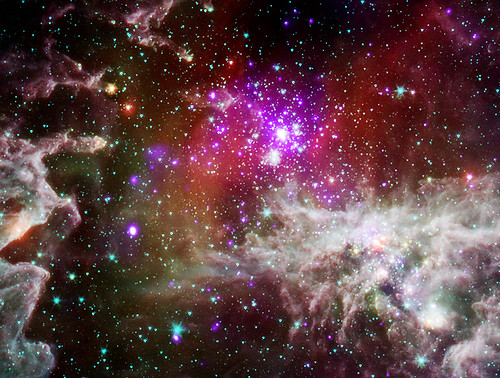Big Bang Monday: NGC 281
Today’s image comes to us courtesy of the Spitzer Space Telescope…
This composite image of NGC 281 contains X-ray data from Chandra (purple) with infrared observations from Spitzer (red, green, blue). The high-mass stars in NGC 281 drive many aspects of their galactic environment through powerful winds flowing from their surfaces and intense radiation that heats surrounding gas, “boiling it away” into interstellar space. This process results in the formation of large columns of gas and dust, as seen on the left side of the image. These structures likely contain newly forming stars. The eventual deaths of massive stars as supernovas will also seed the galaxy with material and energy.
Tags: big bang prints, jpl, spitzer

And we’re worried about the solar wind in our system? The energy produced in this star cluster makes our star’s output look like a candle compared to a nuclear explosion. Makes me wonder if and how life would evolve with such massive stars nearby. We try to speculate based on what we think life needs to exist but now that we’re finding life in the most extreme environments imaginable, who knows what shape life could take. Uh oh, I see a Star Trek episode idea brewing… a planet with a 20 star sunset, each a different size and brightness… a newly developed Starship heat shield… a protective bubble you beam down into… WHOA. Don’t get me started!